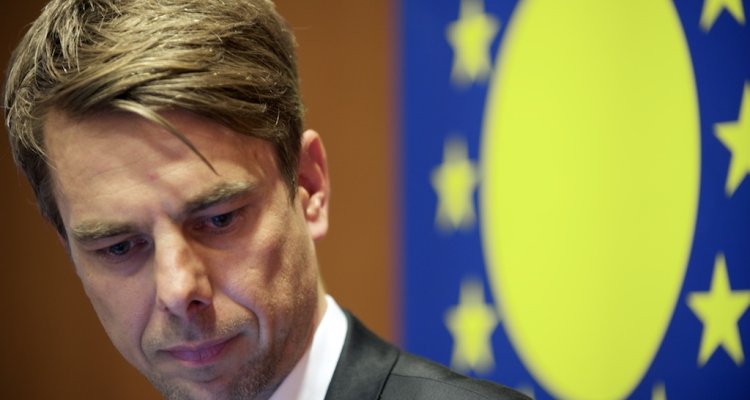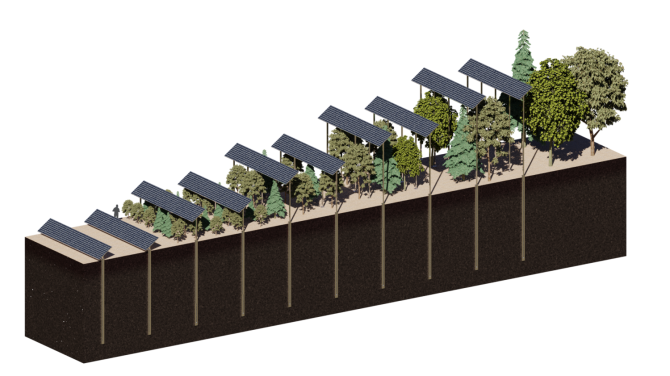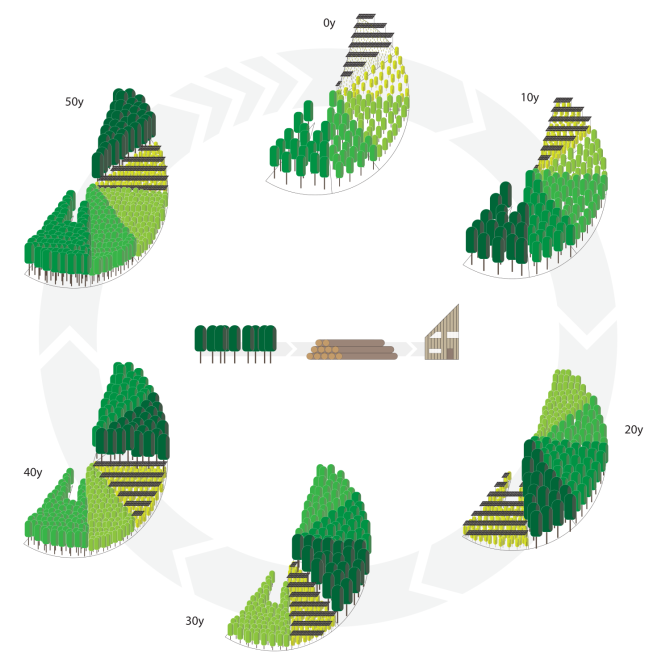
News
‘Transitioning to sustainable energy will, once again, transform our landscapes’
In his role as a personal professor Post-Carbon Landscape Design, Sven Stremke hopes to impart the need for sustainable landscape architecture to his students and colleagues. ‘Our landscapes will transform in line with climate change mitigation and the transition towards sustainable energy.’
The landscapes we design, develop and use will change as a result of our shift away from fossil energy. Professor Sven Stremke, who is to deliver his inaugural speech on 11 October, wants landscapes to contribute to a CO2-neutral society. ‘The Netherlands has already gone through four energy transitions. Wood and peat were replaced as sources of heat. Windmills and watermills have become obsolete, and we are now moving away from fossil fuels. Each transition has altered the landscape. And now, our environment will once again transform as we shift towards clean energy.’
As a personal professor of Post-Carbon Landscape Design with the Landscape Architecture group, Stremke aims to facilitate this change both within the lecture rooms and at the drawing and policy tables. ‘I want to train landscape architects for whom sustainability is a central, guiding principle. And I want landscape architects to have a say in the conversation on climate mitigation and sustainable energy production, from the very start. Too often, we are called upon to mitigate the impact after the significant aspects of a project have already been decided.’
From aesthetic to climate-positive
To make his inaugural speech accessible and interesting for students, Stremke chooses an unconventional approach. ‘Landscape architecture students select a topic to specialise in during their studies. I hope that a more playful, informal lecture can convince them to choose a climate-neutral, or perhaps even a climate-positive, topic. That is why I have decided not to draft my speech in writing. I aim to deliver more of a lecture.’

Stremke’s field still heavily focuses on aesthetics. If sustainability is part of the considerations, it is frequently not fully included in the decision making. ‘If I show my students two park benches during a field trip, many of them still prefer the most aesthetically pleasing one rather than including the use of sustainable materials in their choice. At the same time, it is still difficult to obtain trustworthy data on the sustainability of design choices. It is about much more than just the production processes and raw materials. Upkeep, for example, should also be performed sustainably.’
Post-carbon landscape design
In his inaugural speech, Stremke aims to delve into the difference between carbon sources and carbon sinks. ‘A sink removes more carbon dioxide from the atmosphere than it adds, while a source does the exact opposite.’ This distinction should help landscape architects design climate-neutral or even climate-positive landscapes.
Stremke uses golf courses as an example to illustrate the sustainability challenges landscape architects face. ‘Trees, grass and ponds, what could be wrong with that? There is a lack of biodiversity, which is obvious, but the upkeep of a golf course is much more problematic. Keeping the grass green requires copious amounts of water, energy and fertilisers, all of which are sources of emissions.’ Stremke takes it one step further by referring to plants’ green reputation in general. ‘Plants are seen as carbon sinks, but intensive cultivation processes, transportation and management emit a great deal of carbon dioxide. While plants extract CO2 from the atmosphere, it is not always sufficient to compensate for these initial emissions. At the end of the day, they are often carbon sources rather than sinks.’

Data is needed to make the distinction between source and sink more effective. ‘That is what landscape architecture needs. A systems-driven approach, for which Wageningen University & Research is known, that looks beyond the construction of the design.’ It is not just Stremke’s new students who are trained to use this approach. Stremke also trained experienced designers to learn more about post-carbon design. ‘That is critical. The projects designed by these colleagues will last for decades or more.’
Energy transition changes the landscape
Landscape architects sometimes lack influence in the construction of energy landscapes in public spaces. ‘A field of solar power plants, for example. Designers are sometimes consulted only when the size and location of the solar park have already been decided, just to determine where a row of trees may be planted.’ If landscape architects are involved from the start, they can help weigh all of the options for the production of renewable energy and more effectively compensate for emissions.
‘Sticking with the example of the solar fields: for a while, solar panels were primarily installed along highways because that is where the power lines are found, making it easy to direct the produced energy onto the grid,’ Stremke explains. ‘Convenient, but this decision also impacts the perception. Anyone traveling through the Netherlands by car may feel the entire country is covered in solar panels, while there is still so much to be done to meet the European energy targets.’
Perception is one of the unique challenges that landscape architects face in the energy transition. ‘Our transition towards sustainable energy is not gradual like the peat or oil and gas eras. This time, part of the Dutch cultural landscape will change dramatically within a short time, which may be controversial. Landscape architects can contribute significantly to the quality of this transformation. Of that, I am convinced.’